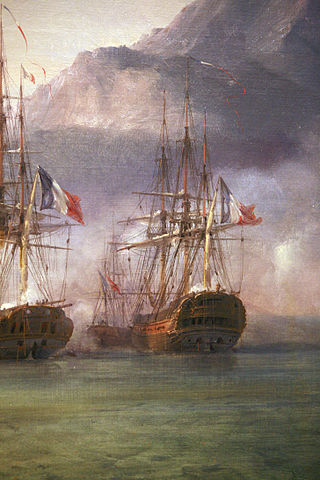
The Prix de Rome or Grand Prix de Rome was a French scholarship for arts students, initially for painters and sculptors, that was established in 1663 during the reign of Louis XIV of France. Winners were awarded a bursary that allowed them to stay in Rome for three to five years at the expense of the state. The prize was extended to architecture in 1720, music in 1803 and engraving in 1804. The prestigious award was abolished in 1968 by André Malraux, then Minister of Culture, following the May 68 riots that called for cultural change.

Jean-Baptiste Descamps was a French writer on art and artists, and painter of village scenes. He later founded an academy of art and his son later became a museum curator.

François Périer, was a French actor renowned for his expressiveness and diversity of roles.
The 18th César Awards ceremony, presented by the Académie des Arts et Techniques du Cinéma, honoured the best French films of 1992 and took place on 8 March 1993 at the Théâtre des Champs-Élysées in Paris. The ceremony was chaired by Marcello Mastroianni and hosted by Frédéric Mitterrand. Savage Nights won the award for Best Film.

Jean-Pierre Darroussin is a French actor and filmmaker. He was born in Courbevoie, France.

Revenant was a 20-gun privateer corvette, launched in 1807, and designed by Robert Surcouf for commerce raiding. The French Navy later requisitioned her and renamed her Iéna, after Napoleon's then-recent victory at the Battle of Jena–Auerstedt. The British captured her in 1808 and she served in the Royal Navy as HMS Victor. The French Navy recaptured her in 1809, taking her back into service under the new name. The British again captured her when they took Isle de France in December 1810. They did not restore her to service and she was subsequently broken up.
The 1960 France rugby union tour of South America was a series of rugby union matches played by the France national team in Argentina, Uruguay and Chile.
Arthena or Association pour la Diffusion de l'Histoire de l'Art is a French company which regularly publishes art history books and most particularly catalogues.

Jean-Baptiste Marie Pierre was a French painter, draughtsman and administrator.
The Commission des Sciences et des Arts was a French scientific and artistic institute. Established on 16 March 1798, it consisted of 167 members, of which all but 16 joined Napoleon Bonaparte's conquest of Egypt and produced the Description de l'Égypte. More than half were engineers and technicians, including 21 mathematicians, 3 astronomers, 17 civil engineers, 13 naturalists and mining engineers, geographers, 3 gunpowder engineers, 4 architects, 8 artists, 10 mechanical artists, 1 sculptor, 15 interpreters, 10 men of letters, 22 printers in Latin, Greek and Arabic characters. Bonaparte organised his scientific 'corps' like an army, dividing its members into 5 categories and assigning to each member a military rank and a defined military role beyond his scientific function.

The Albert Londres Prize is the highest French journalism award, named in honor of journalist Albert Londres. Created in 1932, it was first awarded in 1933 and is considered the French equivalent of the Pulitzer Prize. Three laureates are awarded each year. The three categories are : "best reporter in the written press", "best audiovisual reporter" and "best reporting book".
Jean-Gabriel Prêtre was a Swiss-French natural history painter who illustrated birds, mammals and reptiles in a large number of books. Several species of animal were named after him.
Denise Benoît was a French actress and singer, active across a wide range of genres on the stage, radio and television. Other members of her family were musicians.
This page is based on this
Wikipedia article Text is available under the
CC BY-SA 4.0 license; additional terms may apply.
Images, videos and audio are available under their respective licenses.









